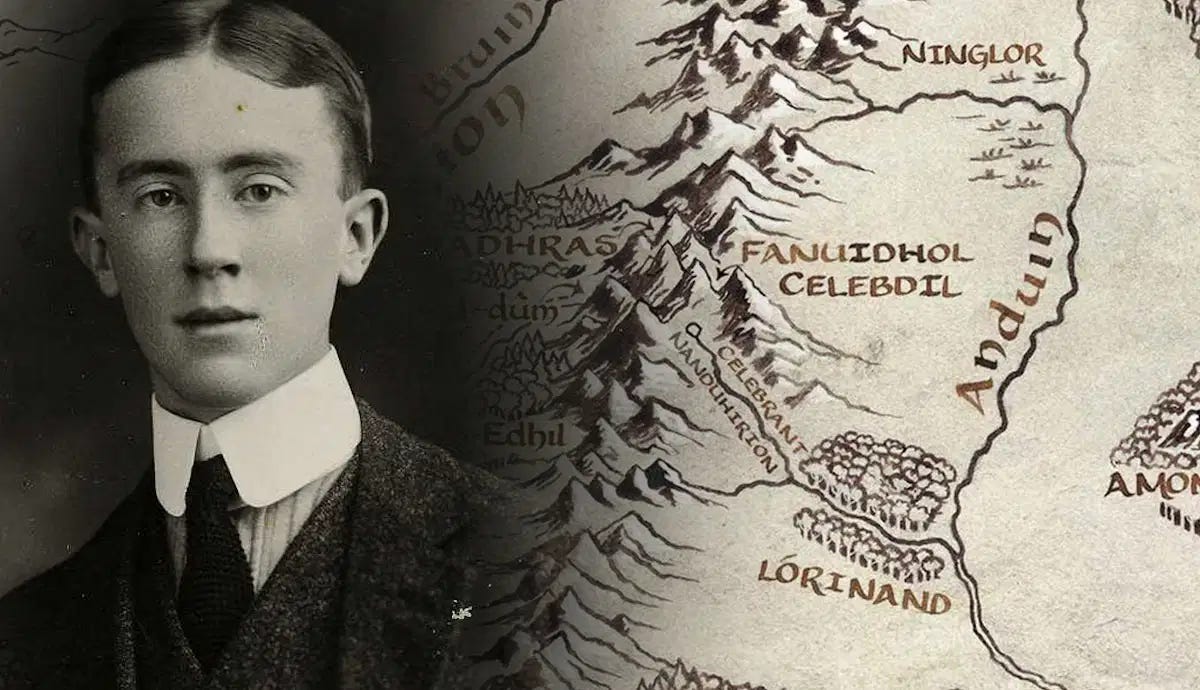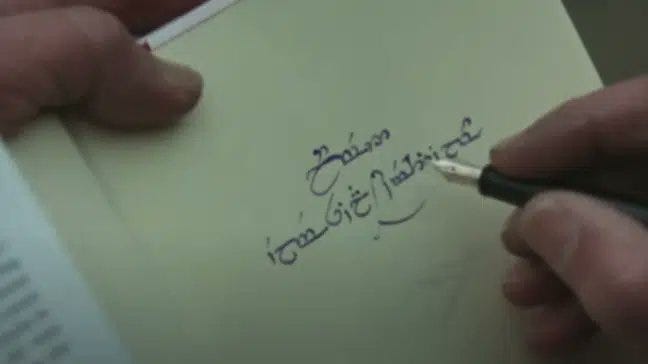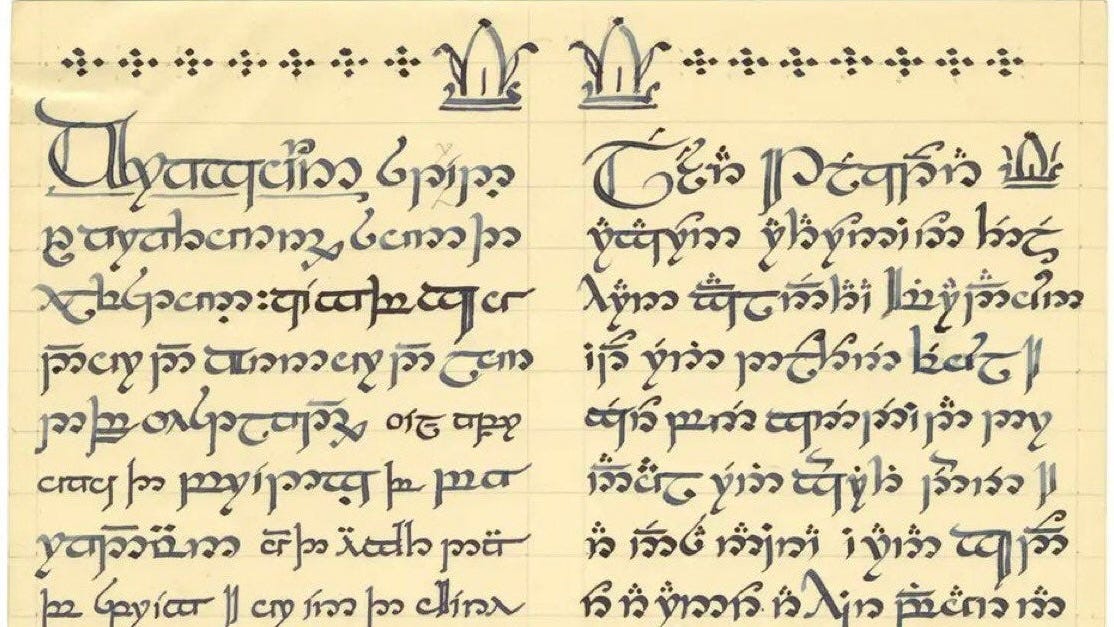How to Write a Masterpiece
Lessons from Tolkien's creative process
Every young artist begins their career wanting to become a star: to write the next Lord of the Rings, direct the next Interstellar, or tour the country like Bob Dylan. Drive and ambition fuel their efforts, as well as dreams of going down in history as a famous and visionary artist.
Yet when you examine the lives of those who did just that, you find something different: rather than the desire to become a star, these artists were driven by something else entirely. Nowhere is this more evident than in the life of one of the 20th century’s bestselling authors, J.R.R. Tolkien.
Today, we examine the origins of Tolkien’s world of Middle-earth to see what it reveals about the nature of the creative process and the values that gave rise to The Lord of the Rings.
What you’ll see is that, in many regards, Tolkien’s approach to making art flies completely in the face of how most people approach it today — and reveals the real secret to creating a masterpiece…
Reminder: this is a teaser of our members-only deep dives.
To support our mission and get exclusive content every week, upgrade for just a few dollars per month. You’ll get:
New, full-length articles 2x per week
The entire archive of content (150+ articles, essays, and podcasts)
Membership to our bi-weekly book club (+ subscriber chat room)
Our book club has just voted to read Tolkien’s The Fellowship of the Ring next! The first discussion is on Wednesday, Nov. 19th, at noon ET — join us!
A Boy’s First Love
Elen síla lúmenn’ omentielvo!
-Frodo Baggins speaking Quenya, The Fellowship of the Ring
Young Frodo’s greeting to the elf Gildor Inglorion, “a star shines on the hour of our meeting”, is the first exposure readers of Tolkien have to the many languages of Middle-earth. Quenya, Sindarin, Khuzdul and Adûnaic are just some of the 15 tongues Tolkien created, and they bring his world to life — literally.
As Tolkien himself said to his official biographer:
Nobody believes me when I say that my long book is an attempt to create a world in which a form of language agreeable to my personal aesthetic might seem real…The invention of languages is the foundation. The ‘stories’ were made rather to provide a world for the languages than the reverse.
-Tolkien to Humphrey Carpenter, J. R. R. Tolkien: A Biography
In other words, the languages of Middle-earth weren’t created for The Lord of the Rings, but rather, The Lord of the Rings was created to give Tolkien’s languages a world to breathe in. Tolkien was an Oxford philologist, which means he studied how languages and words develop over time. Yet his passion for language was not a merely academic one — it instead has its roots at the earliest beginnings of his life.
As a young boy, Tolkien was enthralled by languages, and by the age of 12 had already developed a strong command of Latin, German, and French. As an adult he would go on to learn everything from Medieval Welsh to Serbian and Greek, but even at a young age he was passionate about creating his own tongues: “Naffarin” and “Nevbosh” are two such examples.
This reveals a powerful insight into the nature of Tolkien’s masterpiece: that at its earliest origins, it was inspired by love. Neither ambition nor a desire for fame drove Tolkien’s work, but rather a natural outpouring of his affection for what he had loved since his youth.
But crucially, it wasn’t just his love for languages that drove him to create The Lord of the Rings…
Follow Your Passion(s)
Recalling how he first had the idea to write The Hobbit, Tolkien recounts the episode with remarkable clarity:
The actual beginning, though it’s not really the beginning, but the actual flash point I remember very clearly. I can still see the corner in my house on 20 Northmoore Road where it happened.
I got a pile of exam papers there, and marking school examinations in the summertime is very laborious, and unfortunately also boring. I remember picking up a paper and…one page on this particular paper was left blank — glorious! Nothing to read. So I scribbled on it, I can’t think why, “In a hole in the ground there lived a hobbit…”
-Tolkien to the BBC, 1968
Where does your mind go when it wanders? What does it naturally drift towards? For Tolkien, the answer was the world of myth: a world filled with wizards, dragons, elves, and, of course, hobbits. He had always felt as though England lacked a national mythology, and was tempted to write one as an answer to the inevitable “what if?”
His creativity was fueled by a love of languages, but also by a love of myth, and a love of England as well. But that’s not all: characters like Tom Bombadil could trace their roots directly back to his children’s toys, and portions of The Hobbit originated in bedtime stories he told them. Tolkien’s son Christopher, in the introduction to the 50th anniversary of The Lord of the Rings, recounts one particular bedtime reading as such:
He also remembered that I (then between four and five years old) was greatly concerned with petty consistency as the story unfolded, and that on one occasion I interrupted: ‘Last time, you said Bilbo’s front door was blue, and you said Thorin had a gold tassel on his hood, but you’ve just said that Bilbo’s front door was green, and the tassel on Thorin’s hood was silver’; at which point my father muttered ‘Damn the boy,’ and then strode across the room to his desk to make a note.
Tolkien’s many passions — family chief among them — inspired his work, and by following them he managed to create something greater than he could ever have imagined.
But, as Tolkien’s life reveals, the key to creativity is more complex than simply pursuing what you love. Because how do you know if you love the right things? And how do you know you’re not just following the whims of a random passion?
Fortunately, Tolkien’s next principle reveals the secret to pursuing what you love the right way — and the key to making sure your work endures…
Keep reading with a 7-day free trial
Subscribe to The Culturist to keep reading this post and get 7 days of free access to the full post archives.







